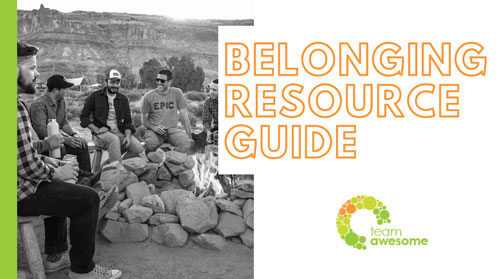The topic of generational differences comes up often, particularly on the topic of Millennials. And frankly, the dialogue out there isn’t so positive. So, I have to ask: Why haven’t we cracked the code on this? Millennials are the most research generation to date. In fact, if you Google “Millennials” you will get over 38 million hits (conversely searching “Baby Boomers” finds only one third as many results). It seems we have been having the “kids these days” conversation for a long time now.
“The children now love luxury. They have bad manners, contempt for authority; they show disrespect for elders and love chatter in place of exercise.”
– Socrates
Situational Leadership
We haven’t cracked the code on generational differences because when it comes to individual relationships, we must instead focus on how to lead each person rather than making assumptions about what we think that we know. We make a lot of assumptions, and these are based on past experiences. But, just because that happened in the past, why must that be true in the future?
Daniel Goleman, the pioneer and author of Emotional Intelligence, defines six leadership styles within situational leadership that may be best fit for different situations. The Hersey-Blanchard Situational Leadership Model describes that there is no one “best” style of leadership (they describe four styles) but is also reliant on the developmental readiness of the person or group being led.
To make this a little more approachable for our daily lives, I define situational leadership by these three main principles:
- Practicing an adaptive leadership style: Being willing and able to listen and assess in the moment, and adjust your style to most be most effective.
- Considering the person and the situation, what is the best way to lead in this case, for you? What are the internal motivations and external factors that are important to that person?
- Remaining authentic to who you are as a leader: Ultimately, we all have a range of skills as a leader that we can pull from. It is important to remain true to who we are, but also our responsibility to stretch and grow our range.
The first step to honing your situational leadership skills are to build a relationship with each individual by listening first, and seeking to understand. Challenge your assumptions. If you consider what motivates that person internally (and take into account the situation around you), your listening will lead you to a communication approach that will better serve you both. By having an understanding of the range of skills you are capable of, you can adjust between styles that still feel true to you.
Test the Theory
Try one way to reconsider how you approach a certain person. Think of someone that you have struggled to communicate with effectively in the past. Honestly answer these questions for yourself:
- Who am I thinking of right now?
- What approach have I been taking so far that isn’t serving us?
- Based on the person, what are they ways they might be motivated? What do they need from me?
- What I will do differently in my next interaction to adjust?
So, go and try it! Use your newfound awareness to take the first steps towards improving your communication.
Now consider a different perspective on a project you are working on with a group. Think of one project, with three different people. How are these three different people motivated towards the same goal? Consider some of these people who might have different motivations or behaviors from you:
- Baby Boomer vs. Generation X vs. Millennial
- Data-driven vs. creative
- Introvert vs. extrovert
- Democratic style leader vs. directive style leader
Consider any other people, perhaps different than you or possibly misunderstood, where a situational leadership approach might be effective. Ask yourself, how do I lead each of these people differently, but all working towards the same end?
If you are adaptive, consider the other person and situation, and stay authentic to who you are as a leader, you may be amazed to find more positive outcomes on work and improved relationships.
Additional Reading
Here are some of my favorite resources that connect to this topic, enjoy these to continue the conversation!
What Makes a Leader? by Daniel Goleman, Harvard Business Review
Why? Emotional Intelligence is at the core of what we do, and this was the definitive work that brought EQ to the forefront in 2004.
Millennials Don’t Want Fun; They Want You to Lead Better by Mark C. Crowley, via LinkedIn
Why? If we suspend judgement for a moment that what Millennials want is a bad thing…
What adults can learn from kids, by Adora Svitak, Filmed February 2010 at TED2010
Why? This talk is by a child prodigy gives perspective on the value of listening to each other, regardless of age.
About the author:
Katie Rasoul is the Chief Awesome Officer for Team Awesome, a coaching and consulting firm. Find out more by visiting www.teamawesomecoaching.com or sign up for our mailing list for awesomeness coming straight to your inbox. Follow Team Awesome on Facebook and Twitter.



Recent Comments